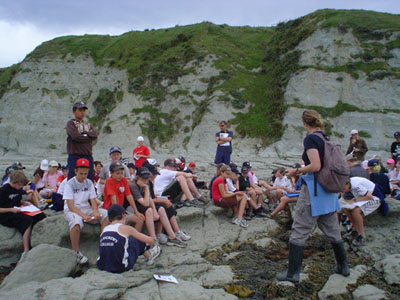Toward this goal we have worked with local organizations, buisnesses, and schools to share our research and general knowledge about the processes occuring in the ocean.
Understanding the life cycles of marine organisms
Did you know that many animals and algae which look sessile (they don't move) actually spent weeks or even months developing in the open ocean? The organisms that we recognise as part of the normal rocky shore community - seaweed, limpets, crabs, paua and the like - represent the adult phase of an often complex life history. Adults of many species have mass spawning events at certain times of the year, and may depend on lunar phase and tidal cycle. Juvenile phases are generally microscopic and are comprised of spores or larvae, which are carried out by ocean currents over distances ranging from centimetres to hundreds of kilometres. All stages of the life cycle are influenced by external factors, determining their survival and ability to contribute to the maintenance of a healthy population.
PHOTO CAPTION: Robyn Dunmore from the Marine Ecology Research Group, educating a group of Year 7 & 8 students from St Andrews College in Christchurch, on Marine Diveristy at the Seal Colony in Kaikoura.

